Parsley is a common herb and is often used in recipes to add a subtle flavor and freshness. But what if you start cooking and realize that you don't have any? You're in luck. You have many options that can offer a similar taste and/or similar look. To understand the best parsley substitutes, you must first know what it is and how its used.
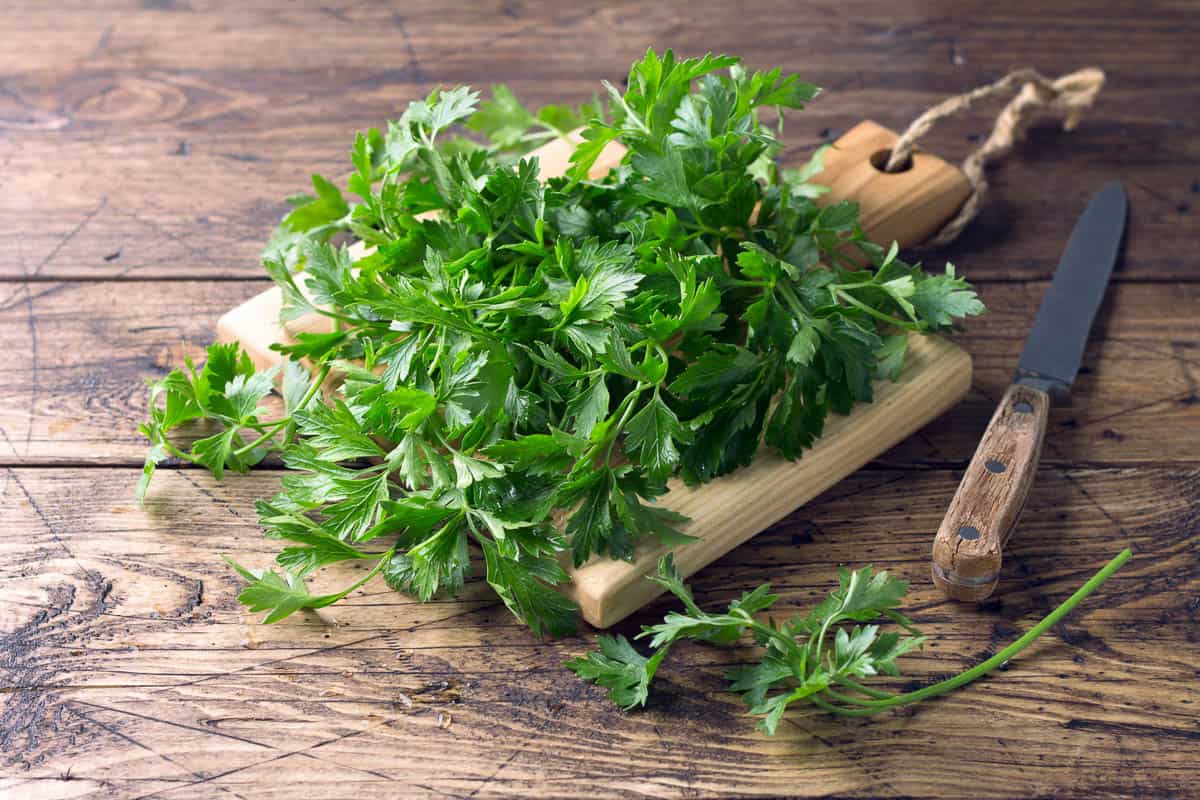
Jump to:
What is Parsley?
Parsley is an extremely versatile green and leafy herb. It is most commonly used to flavor recipes, but may also appear as a garnish on the dish. When used in cooking, parsley has a clean, earthy, and peppery taste that accentuates many types of cuisine.
Parsley is derived from the Latin petroselinum, which means rock or stone. The Greeks are believed to be the first to discover the herb, growing through the rocky foothills that characterize much of Greece’s landscape.
The herb is common beyond Greece, of course. It is native to eastern, central and southern Mediterranean. This includes the countries of Italy, Greece, Portugal, Morocco, and Lebanon to name a few.
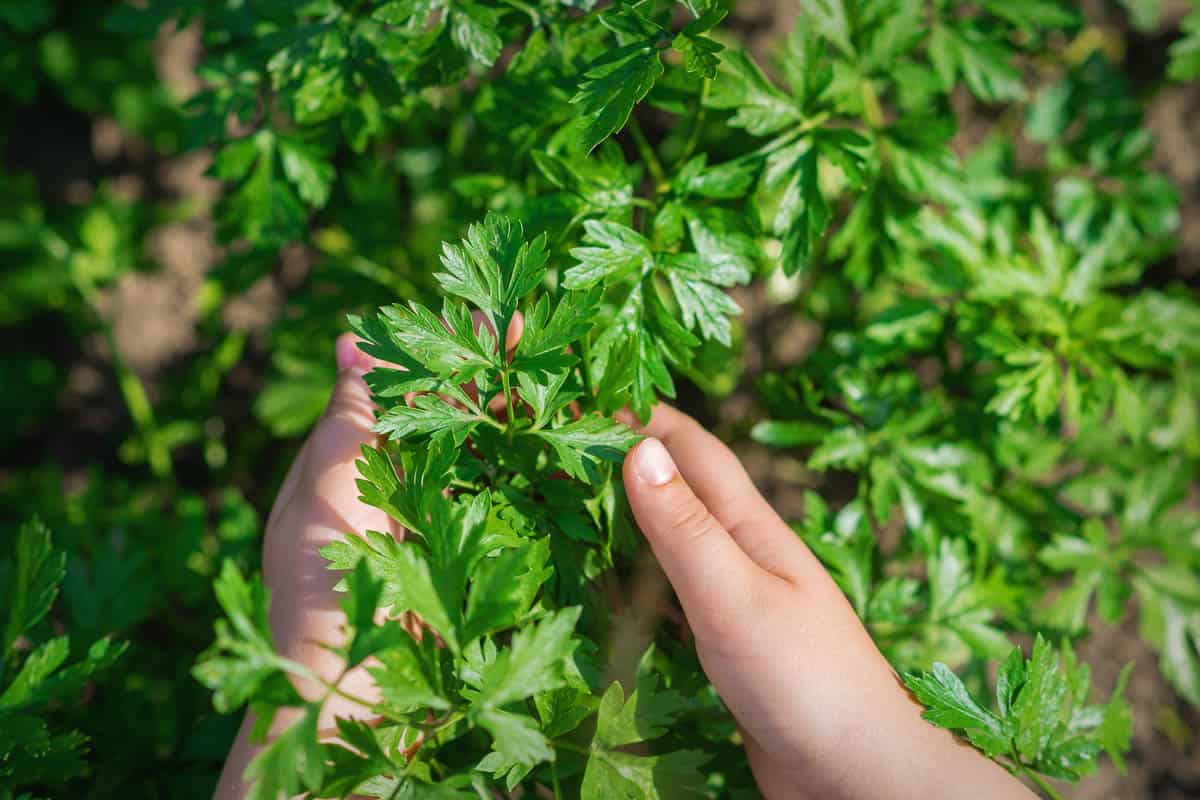
Most Common Varieties of Parsley
This green leafy herb comes in four main varieties:
- Flat-leaf parsley (Italian)
- Curly-leaf parsley
- Root parsley (also called Hamburg)
- Japanese parsley
The most common types of parsley you will see in the grocery store are flat leaf or Italian parsley, and curly parsley.
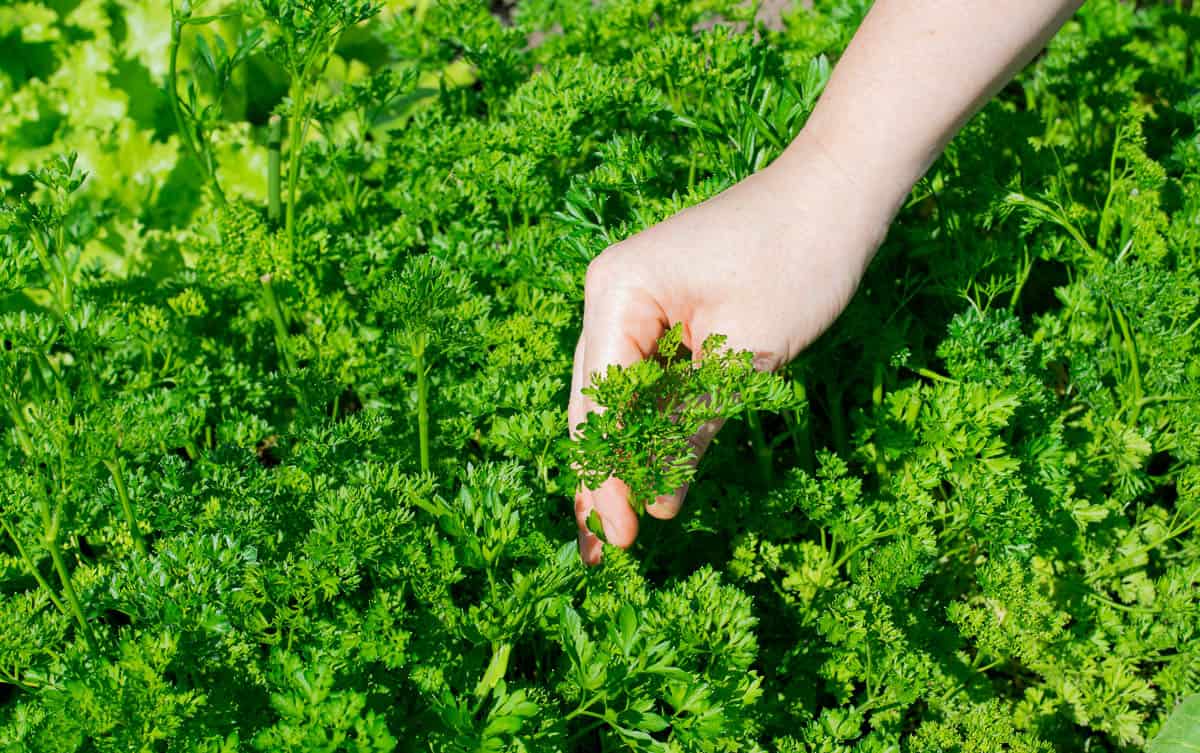
Why and How It Is Used
Parsley is used to give an herbal flavor to soups, stews, and sauces. In Western Asia, parsley is a key ingredient in salads, such as Tabbouleh.
Notably, parsley is a common ingredient in French bouquet garni. This is a unique herb mixture that is a staple in classic French stock, soup, sauce, and stew recipes.
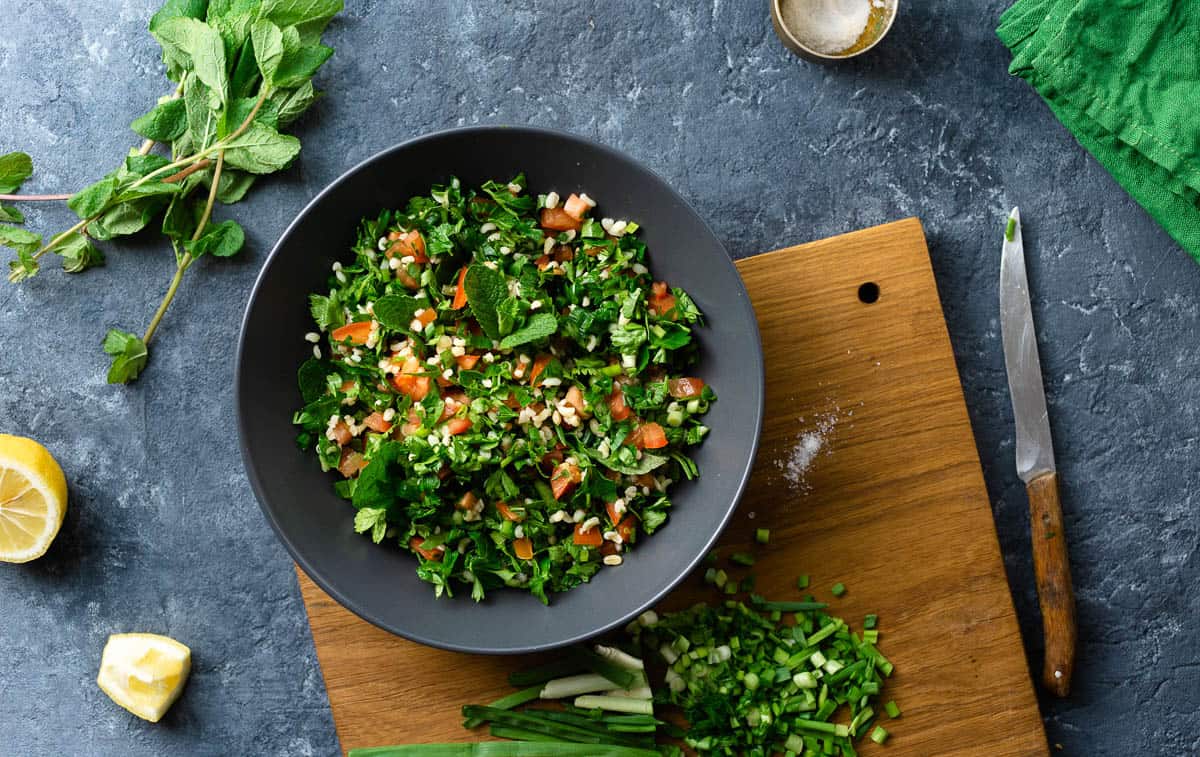
Difference Between Fresh Herbs vs. Dried Herbs
If you are looking for a parsley substitute, you will have to decide between fresh and dried herb alternatives. You may already know the difference– fresh herbs look like they were just picked, while dried herbs have been processed in some way. This might include heating, dehydrating, or otherwise breaking/grinding the herbs down into a powder form.
Considerations when choosing between fresh and dried herb substitutes:
- In general, dried herbs have a stronger and more potent flavor
- The cooking process may deconstruct or destroy herbs, causing a loss of flavor
- Dried herbs are more resilient and thus more suitable for recipes with a long cook time
- Fresh herbs are more delicate, and should always be added toward the end of the cooking time to preserve their flavor
Important: As a general rule of thumb, use a 3:1 ratio of fresh-to-dried herb substitute. For example, if the recipe calls for 1 tablespoon of fresh parsley, a substitution could be made using just 1 teaspoon of dried herbs (since there are 3 teaspoons in 1 tablespoon). This will help compensate for the stronger flavor that dried herbs tend to have.
In the sections below, we’ll look at the most popular substitutes for parsley. The first section contains all fresh substitutes, and the second section contains alternatives that have been dried.
Take a moment to note the cooking time of your recipe and when it calls for herbs to be added, then choose a substitute from the appropriate section.
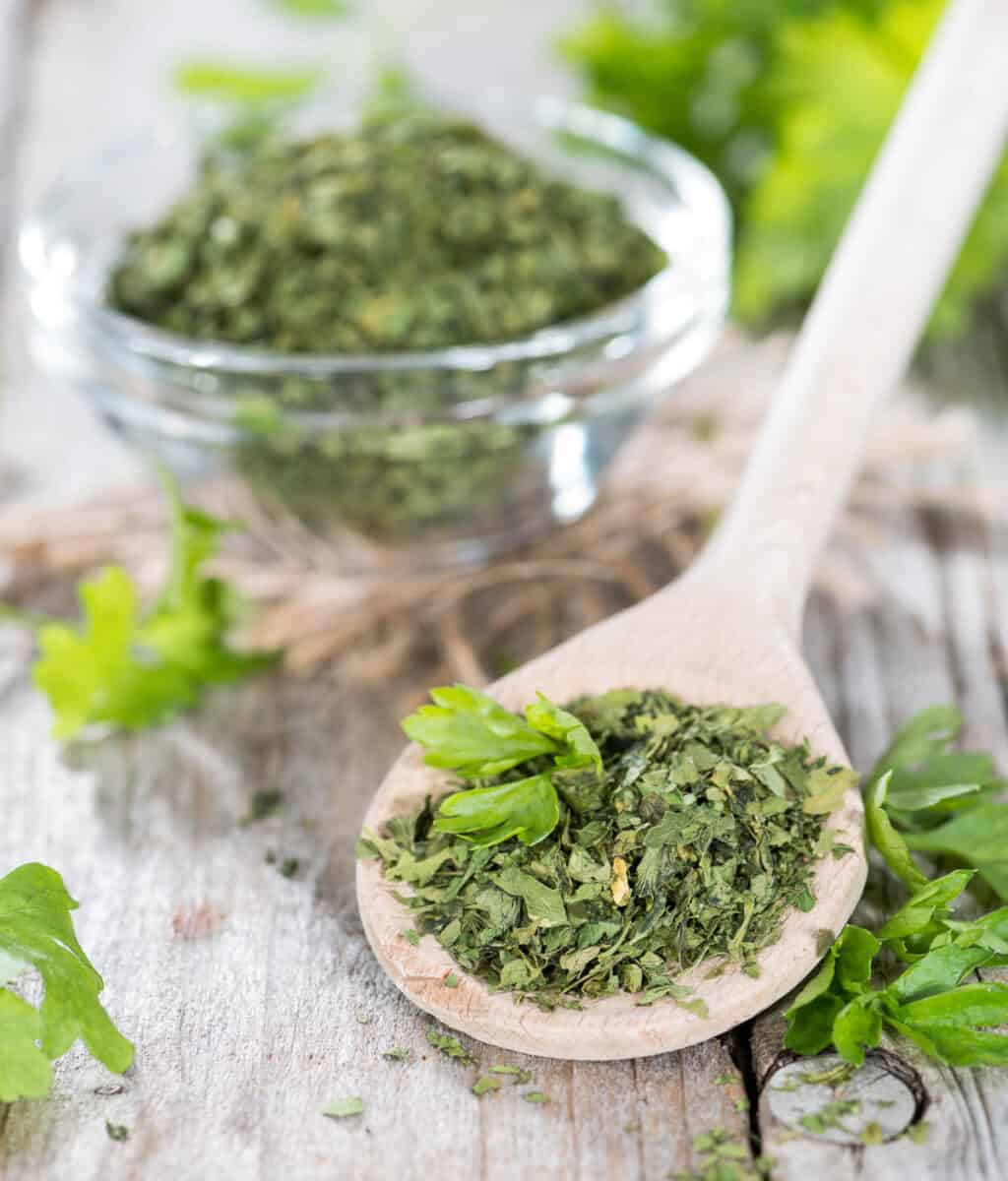
Fresh Substitutes for Parsley
If you're able to get to the store or farmers market, or if you happen to have a garden, you might find these alternatives work best for your recipe.
Celery Leaves
The leaves on celery are found at the top of the stock, and they are one of the best substitutes for parsley. They can be dark or light green in color, each of which has a subtle difference in flavor.
Dark green leaves have a stronger flavor and tend to be tougher. These are best used in soups, stews, stocks, purees and sauces.
Light green leaves are more tender and can be eaten raw in salads or used as a garnish.
- Tastes Like: The same earthy, peppery, and somewhat salty taste as celery– but milder.
- Substitution: Use a 1:1 ratio. For example, if the recipe calls for 1 tablespoon shredded parsley, use 1 tablespoon shredded celery leaves.
- Special Notes: When cooking, always add celery leaves at the end of the cook time to preserve their flavor.
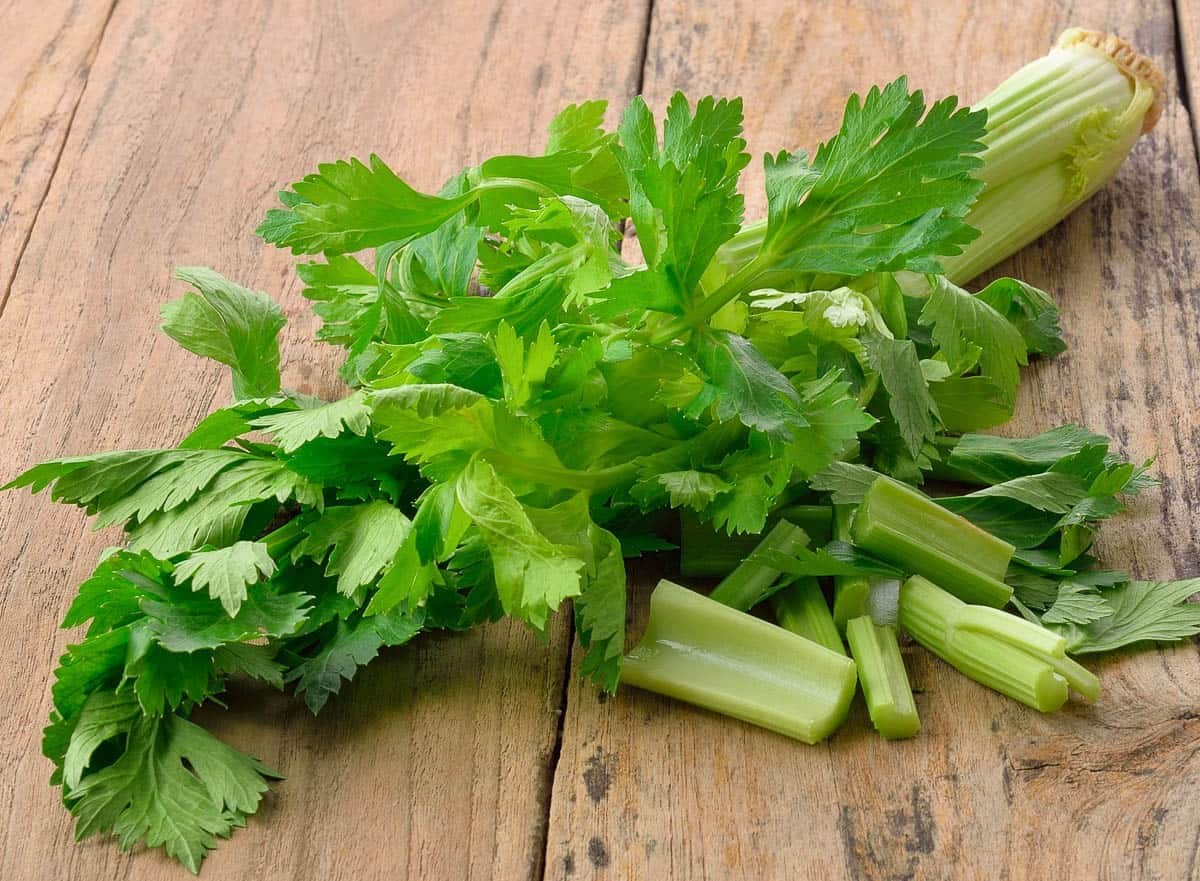
Chervil Leaves
Chervil is an herb often called French parsley, and it is frequently used in French cooking. It is in the parsley family with a taste between parsley and tarragon.
All of these things make chervil leaves an excellent alternative to parsley. However, chervil is not easy to find at grocery stores. Always call ahead to ask if it is available. If you cannot find it locally, you may be able to find it from a reputable online store.
Chervil leaves are used in soups, sauces, salads, omelets, and Bernaise sauce. They are also used in the classic French herb mix, Fines Herbes.
As with other fresh herbs, chervil leaves should also be used at the end of the cooking process to maintain their flavor.
- Tastes Like: Mild, bittersweet, with a hint of licorice or anise.
- Substitution: Use a 2:1 ratio. For example, if the recipe calls for 1 tablespoon parsley, use 2 tablespoon Chervil.
- Special Notes: Chervil has a milder flavor than parsley. Always use at the end of the cooking process to maintain flavor.
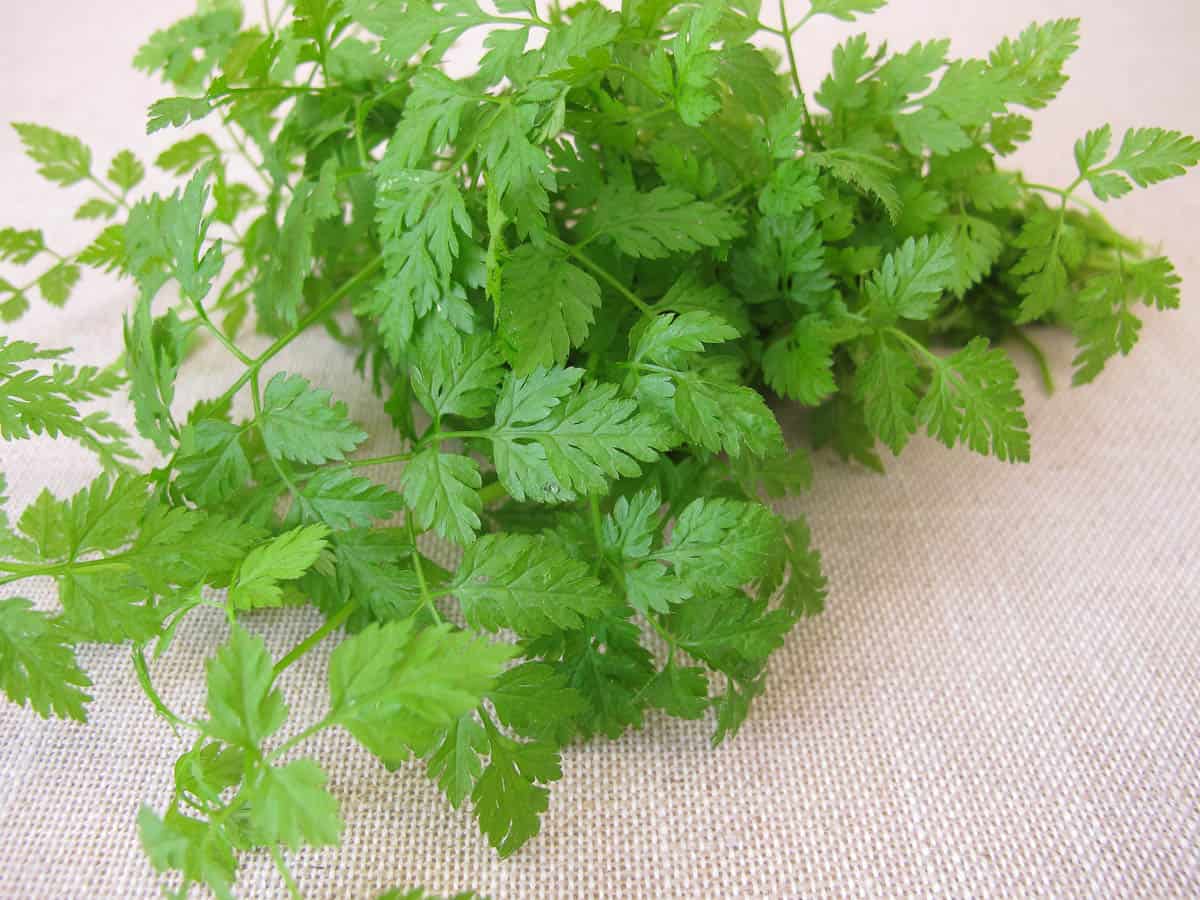
Cilantro Leaves
Cilantro is another member of the parsley family that makes for a very good substitute. Cilantro is often confused with coriander, however. So what’s the difference?
Coriander is made from the seeds of the cilantro plant and has a very distinctive taste. Both cilantro and coriander can be used as a substitute, but be aware that the latter has a stronger, citrusy, and slightly peppery flavor.
Cilantro is most commonly used in Indian, Mexican, Mediterranean, and Middle Eastern cuisine. The herb adds vital flavor to salsa, guacamole, shakshuka, and chutney. It is also used as a garnish, especially in soups.
Bear in mind that not everyone likes the taste of fresh cilantro. It has a soapy taste for some people that comes from the chemical aldehyde, which is naturally found in the leaves.
Not everyone is able to smell and taste aldehyde, however. For those who cannot sense the chemical, cilantro has a deliciously fresh, citrus, and slightly spicy flavor.
- Tastes Like: Fresh, citrus, and (for some people) a soapy aftertaste.
- Substitution: Use a ½:1 ratio. For example, if the recipe calls for 1 tablespoon parsley, use ½ tablespoon cilantro leaves.
- Special Notes: Not a good alternative if you are cooking for a group of people (as some may think it tastes soapy).
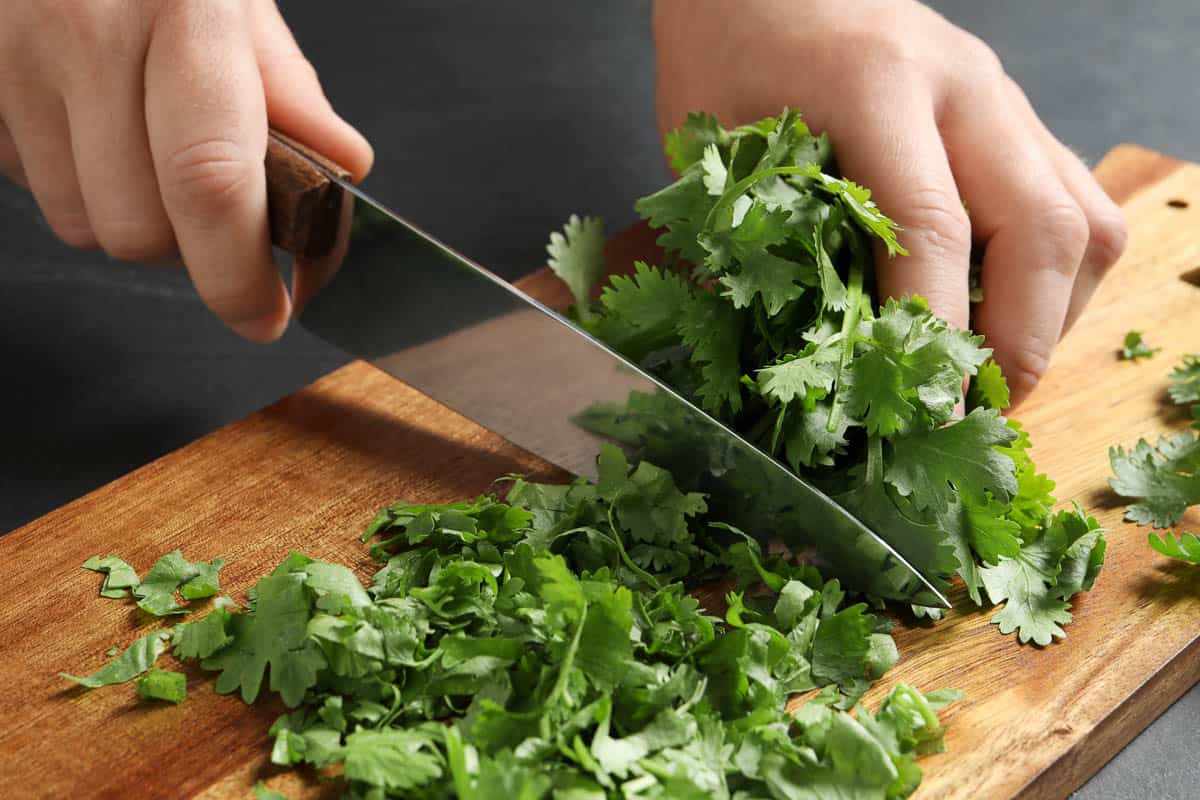
Basil (Sweet Basil)
Fresh basil is a sweetly fragrant and aromatic herb with bright green leaves. It has a unique flavor that many people call peppery and slightly minty.
Basil is perhaps best known for accenting Italian cuisine. For this reason, it is a prime substitute for parsley in Italian recipes. It also works well in homemade sauces, salads, stuffings, and meat and fish dishes.
- Tastes Like: A harmonious combination of sweet, savory, minty, and anise flavors, with a peppery aftertaste.
- Substitution: Use a ½:1 ratio. For example, if the recipe calls for 1 tablespoon parsley, use ½ tablespoon basil.
- Special Notes: Start with a ½:1 ratio, and season to taste. An excellent substitute in Italian recipes.
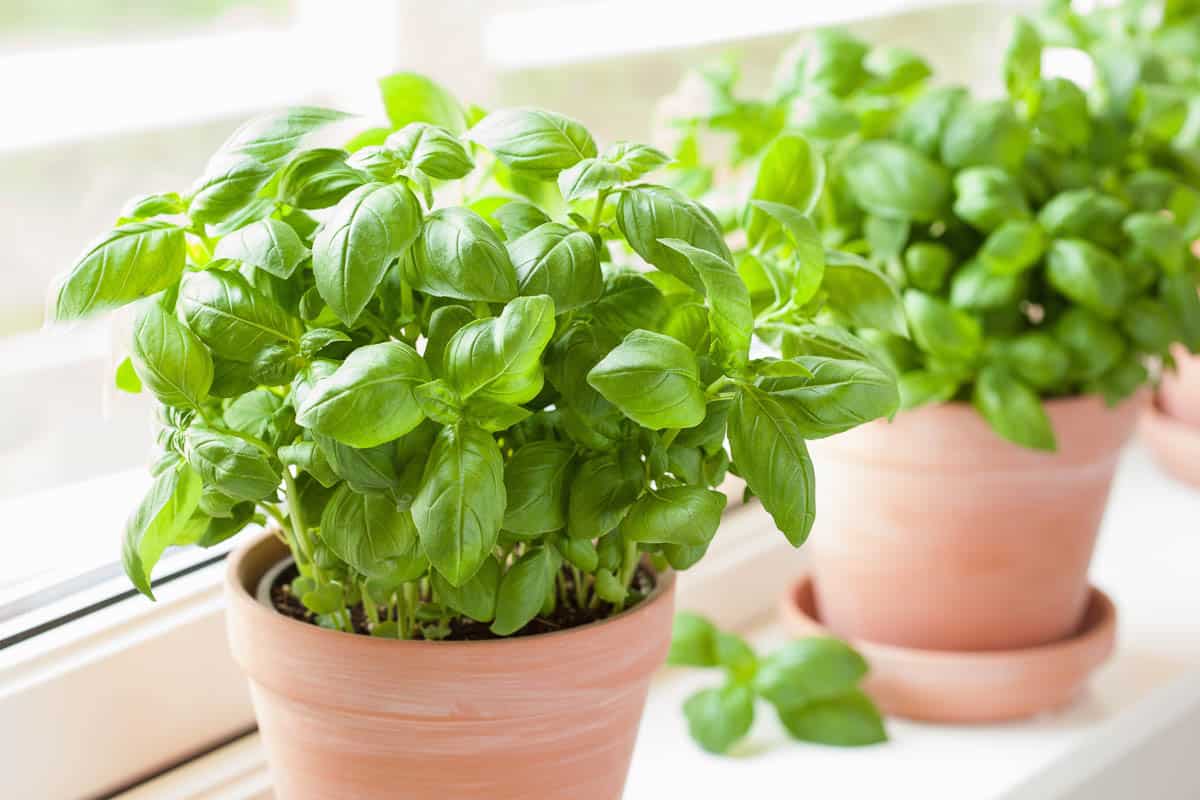
Arugula
Arugula is considered a vegetable in the lettuce family, rather than being an herb. Nevertheless, its similarly peppery and slightly bitter flavor make it a good substitute for parsley.
Arugula is often used in salads, pastas and soups. It is best used in cold dishes, although it can be cooked to mellow the flavor.
- Tastes Like: Distinctly spicy with bright, tart, peppery, and slightly bitter flavor.
- Substitution: Use a ½:1 ratio. For example, if the recipe calls for 1 tablespoon parsley, use ½ tablespoon arugula.
- Special Notes: Best used in salads, pastas and soups. Cooking the arugula will mellow the flavor a bit.
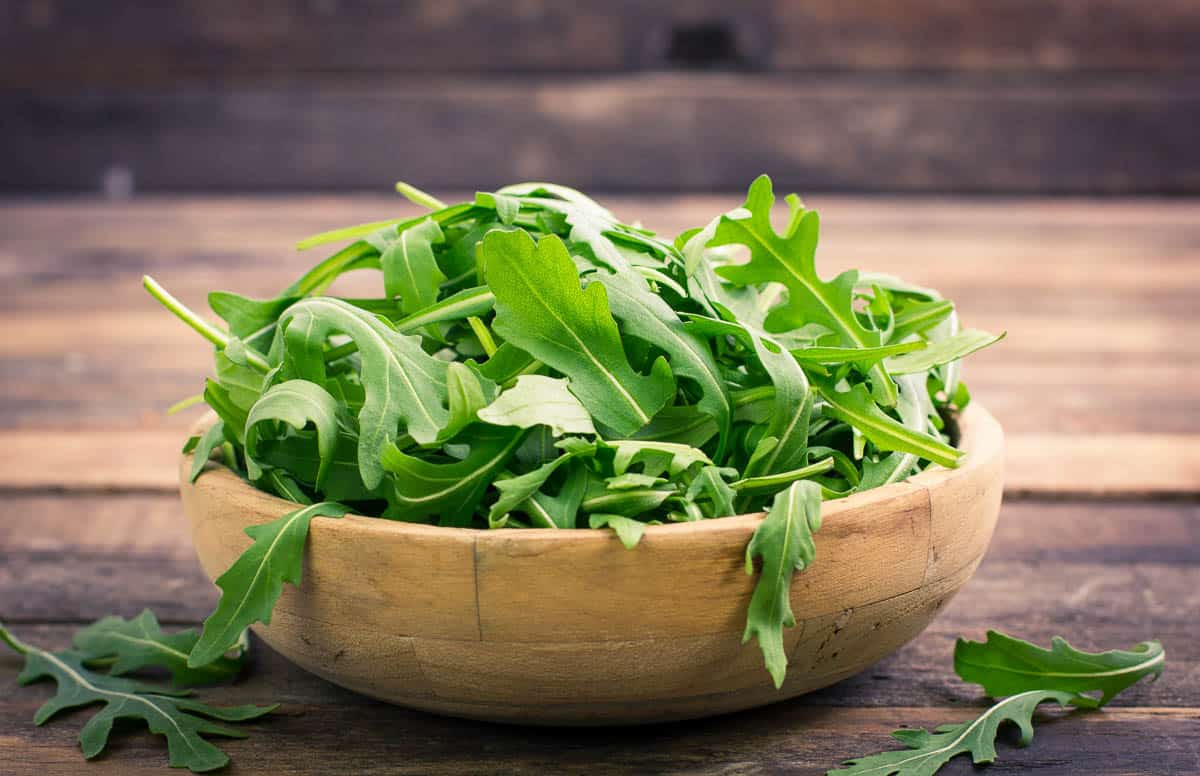
Endive
There are 3 different types of Endive. The one to use in substitution for parsley is the curly leaf endive, or frisee.
Like arugula, endive is a vegetable with a peppery and slightly bitter taste. It can be substituted for parsley the same way you would arugula (as described below).
- Tastes Like: Crisp and bitter when raw, but softer, nutty, and more mellow when cooked.
- Substitution: Use a ½:1 ratio. For example, if the recipe calls for 1 tablespoon parsley, use ½ tablespoon endive.
- Special Notes: The best substitute is curly leaf endive, or frisee.
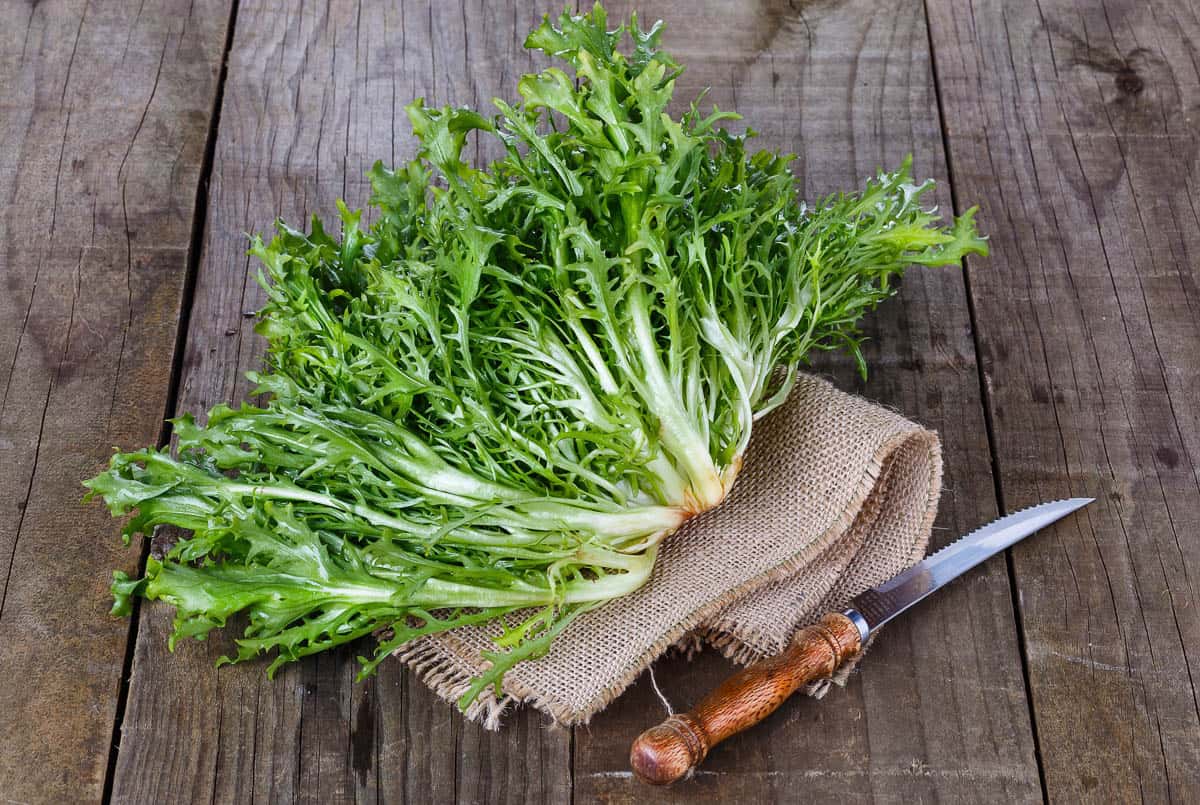
Carrot Greens
Carrot tops or greens resemble parsley, and they are an excellent substitute. They have a similar earthy-bitter taste compared to parsley, with an added hint of celery flavor.
Carrot greens can be used in salads, pasta, rice, and in soups and stews. Finely chop the greens before adding.
- Tastes Like: Overall mild combination of earthy, spicy, sweet, and somewhat bitter flavors. Comparable to beet greens or Swiss chard.
- Substitution: Use a 1:1 ratio. For example, if the recipe calls for 1 tablespoon parsley, use 1 tablespoon carrot greens.
- Special Notes: Always chop finely before adding to your recipe. Best when used in salads, pasta, rice, and in soups and stews.
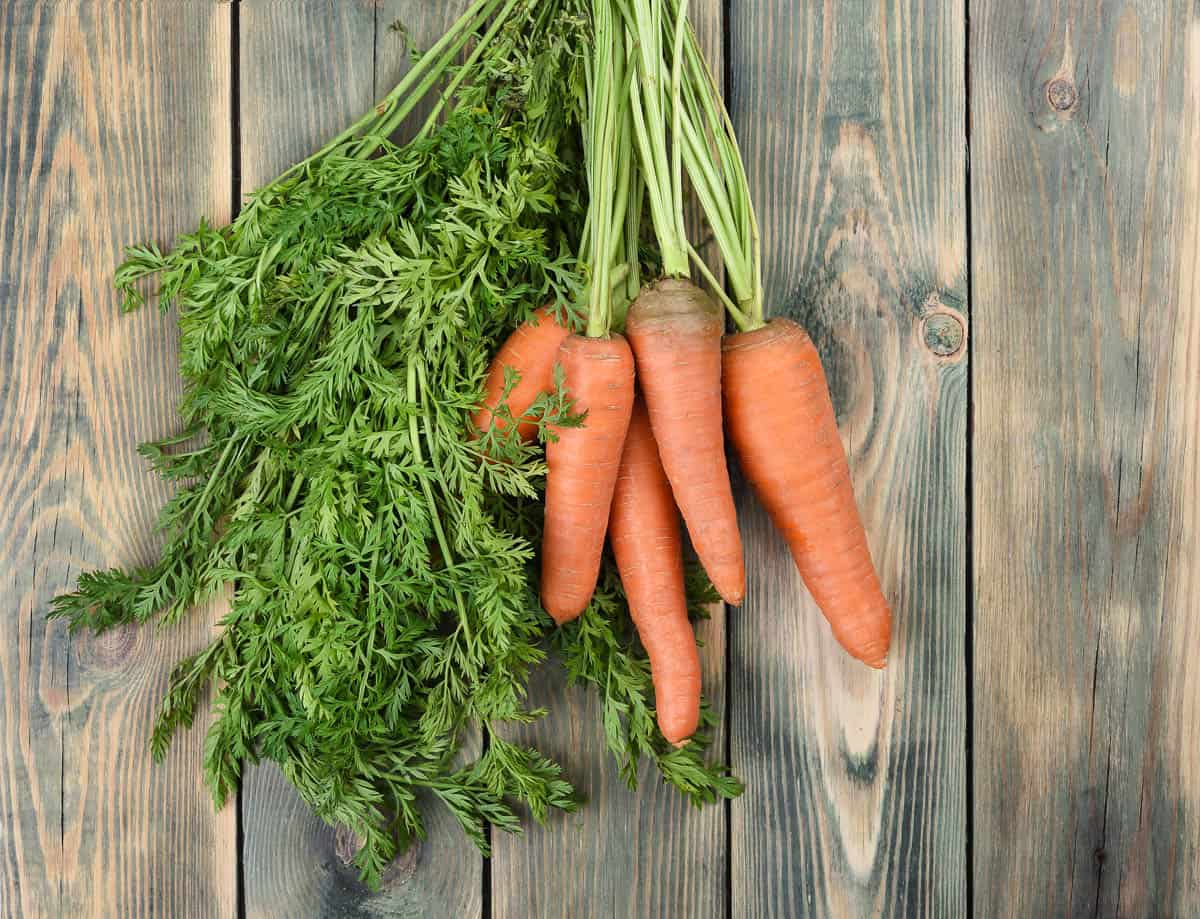
Tarragon (French Tarragon)
Tarragon is a French aromatic herb with a peppery and licorice-like flavor. It has long, thin leaves and a bright green color. And like parsley, fresh tarragon is often used as a garnish.
Notably, just a small amount of tarragon can yield a subtle hint of parsley. It complements many of the same dishes, including soups, sauces, salad dressings, and chicken, fish and egg dishes.
- Tastes Like: Pungent, bittersweet, with a mild licorice aftertaste.
- Substitution: Use a ¼:1 ratio. For example, if the recipe calls for 1 tablespoon parsley, use ¼ tablespoon French Tarragon.
- Special Notes: This parsley alternative has a very strong taste. Some may prefer to begin with just a pinch, then adding more until desired taste is reached.
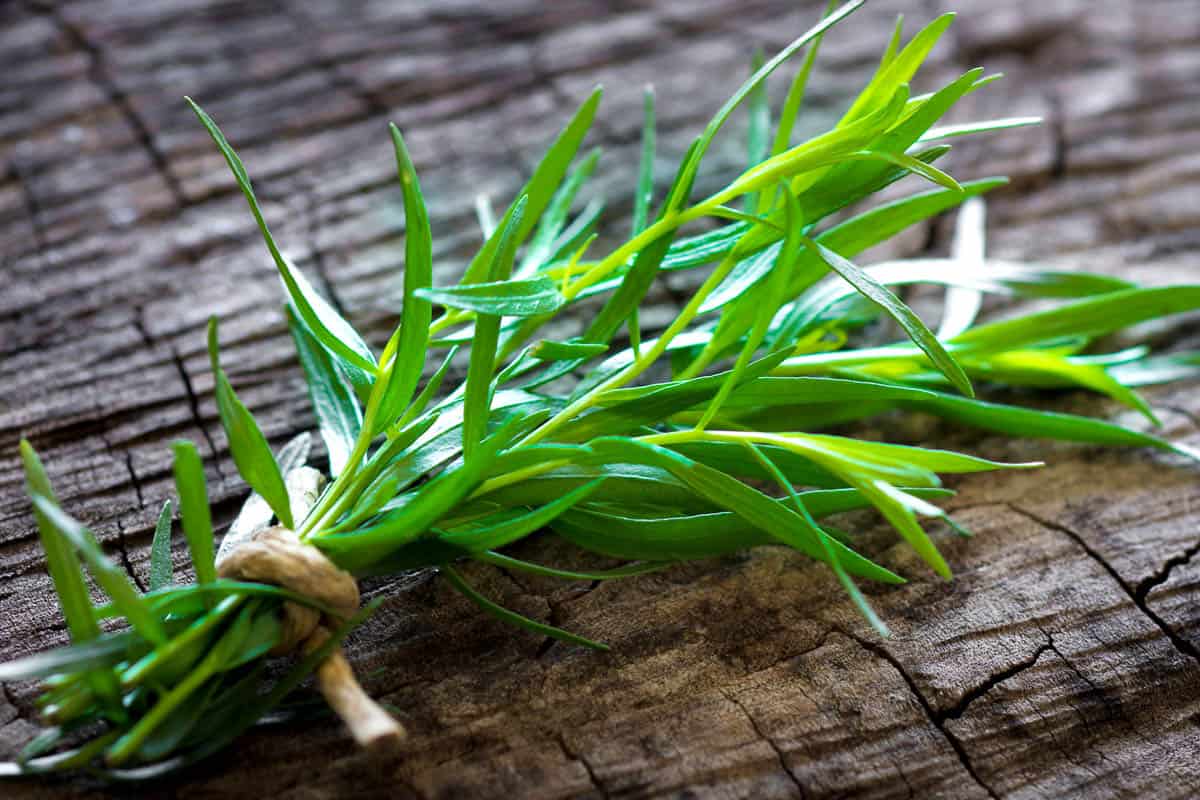
Chives
Fresh chives are part of the same family as onions, leek, shallots, and garlic. They have a mild onion flavor with just a hint of garlic aftertaste. While the flavor profile is not the same as parsley, chives bring a unique flavor that works well in many of the same dishes.
You can use chives in recipes for eggs, potatoes, sauces, soups, salads, and dressings. They go well in cooked dishes as well as cold and as a garnish.
- Tastes Like: Mild onion flavor with a hint of garlic.
- Substitution: Use a 1:1 ratio. For example, if the recipe calls for 1 tablespoon parsley, use 1 tablespoon chives.
- Special Notes: A unique taste that works well in most dishes. Best in recipes for eggs, potatoes, sauces, soups, salads, and dressings.
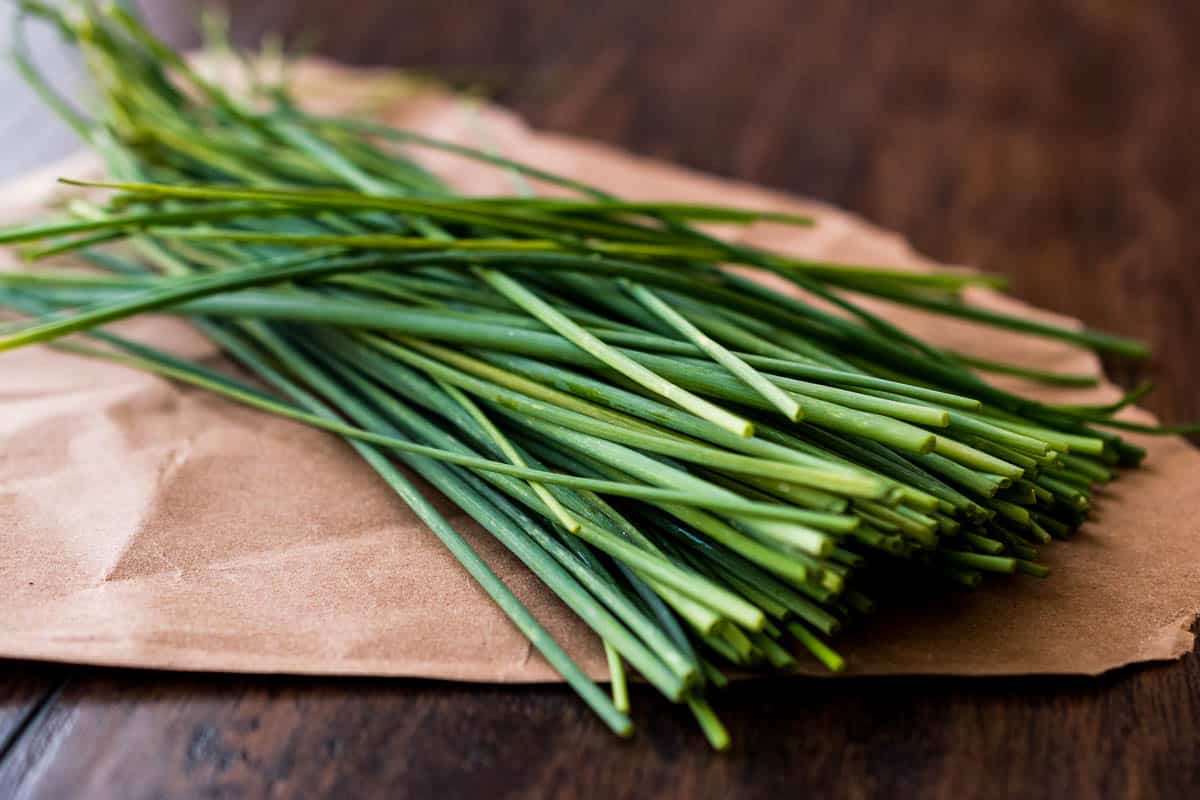
Oregano
Oregano has a peppery and almost bitter taste. It is a good substitute for parsley, although the previously mentioned substitutes seem to be more popular.
With an intense flavor and savory undertones, be sure to use just a small amount so it does not overpower the dish. When using fresh oregano, it is one of the few herbs that can be added toward the beginning of the cooking process.
- Tastes Like: Sweet, minty aroma with a subtle sweetness and peppery bite. In general, oregano is considered a strongly flavored herb.
- Substitution: Use a ½:1 ratio. For example, if the recipe calls for 1 tablespoon parsley, use ½ tablespoon oregano.
- Special Notes: Best when used in sauces, especially tomato-based sauces, stews, meat marinades, casseroles, and stuffings.
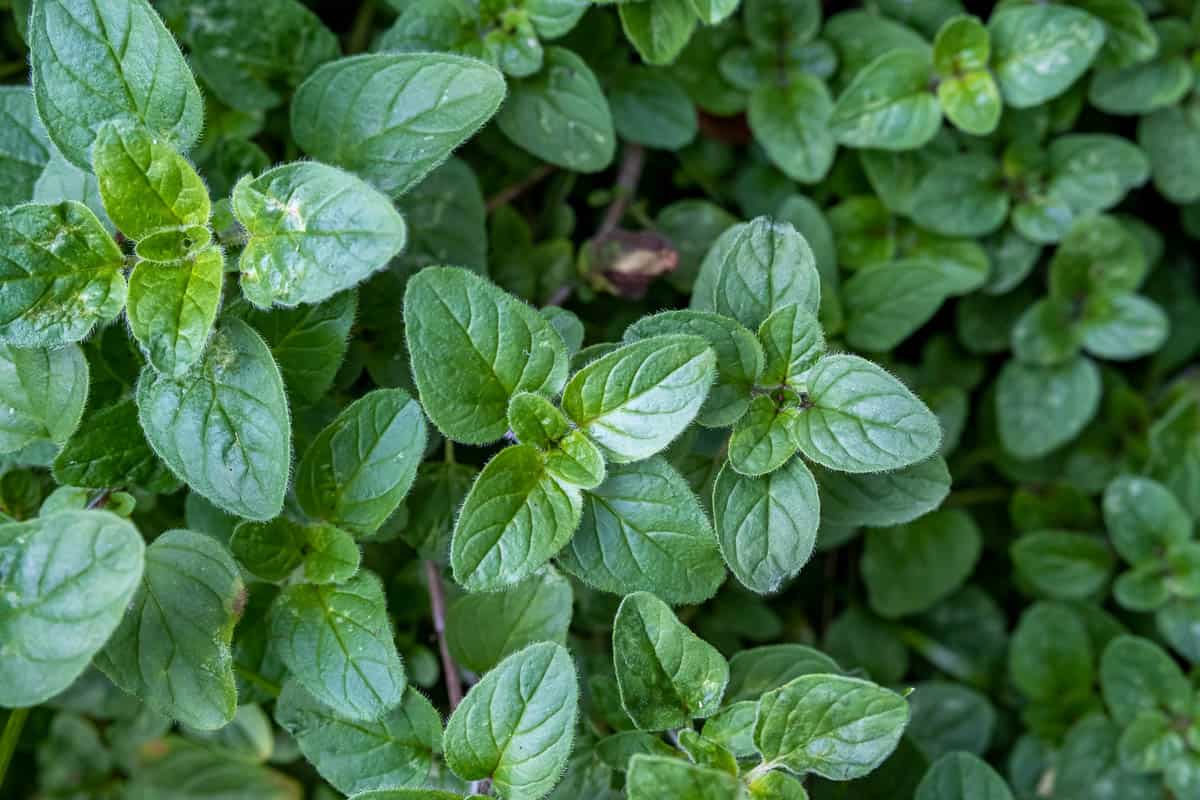
Dried Substitutes for Parsley
Sometimes it pays to have a well stocked pantry or preserve herbs and plants from your garden. Most home cooks have at least one of these options below.
Dried Celery Leaves
You can buy dried celery leaves in a store, however they are somewhat expensive.
Alternatively, you may dry your own. Simply remove the leaves from the celery, then wash and dry them. Next, place them on a plate or drying rack, making sure leaves are not touching each other.
After around 5 days they should be dry. You can test by breaking them up. If they don’t break easily, leave them to dry a couple more days.
Once dry, put them in a bowl and crush them into smaller pieces. Put them in an airtight container and store in a cool, dry place.
- Tastes Like: A more intense flavor profile than the fresh celery leaves described above, with earthy, peppery, and slightly salty notes.
- Substitution: Use ⅓rd the amount. For example, if the recipe calls for 1 tablespoon fresh parsley, use 1 teaspoon dried celery leaves.
- Special Notes: To save money, consider making your own (see tips above).
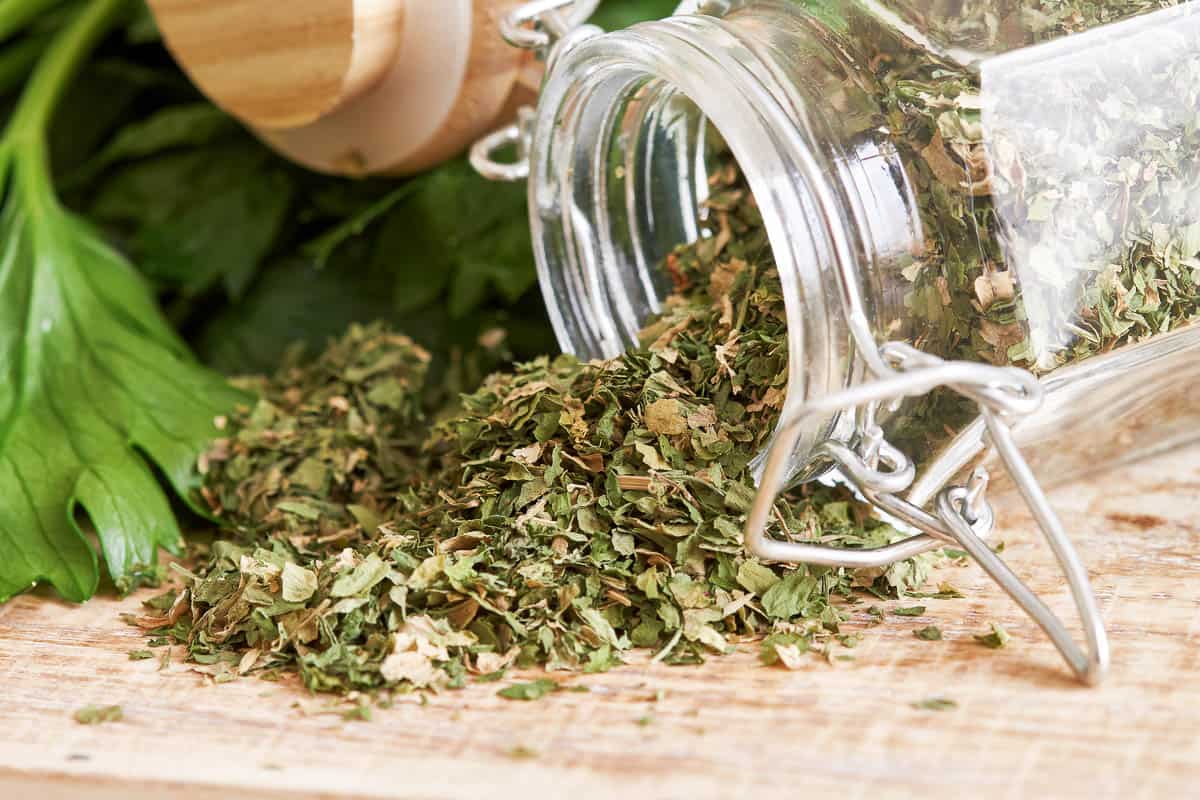
Dried Chervil
The flavor of chervil is close to parsley, but milder. This is a finishing herb that you should add at the end of the cooking process, as it loses its flavor with prolonged cooking.
Chervil is found in Bernaise sauce and egg dishes. It is also common in cream based soups, salads, grilled lamb, and pasta dishes.
- Tastes Like: Mild, bittersweet, with a hint of licorice or anise. Because it is dried, it will have a more intense flavor compared to the fresh Chervil described above.
- Substitution: Use ⅓rd the amount. For example, if the recipe calls for 1 tablespoon fresh parsley, use 1 teaspoon dried chervil.
- Special Notes: Start with the above ratio, then season to taste. Some think chervil has a milder flavor than parsley, so you may want to add a little extra to achieve desired flavor.
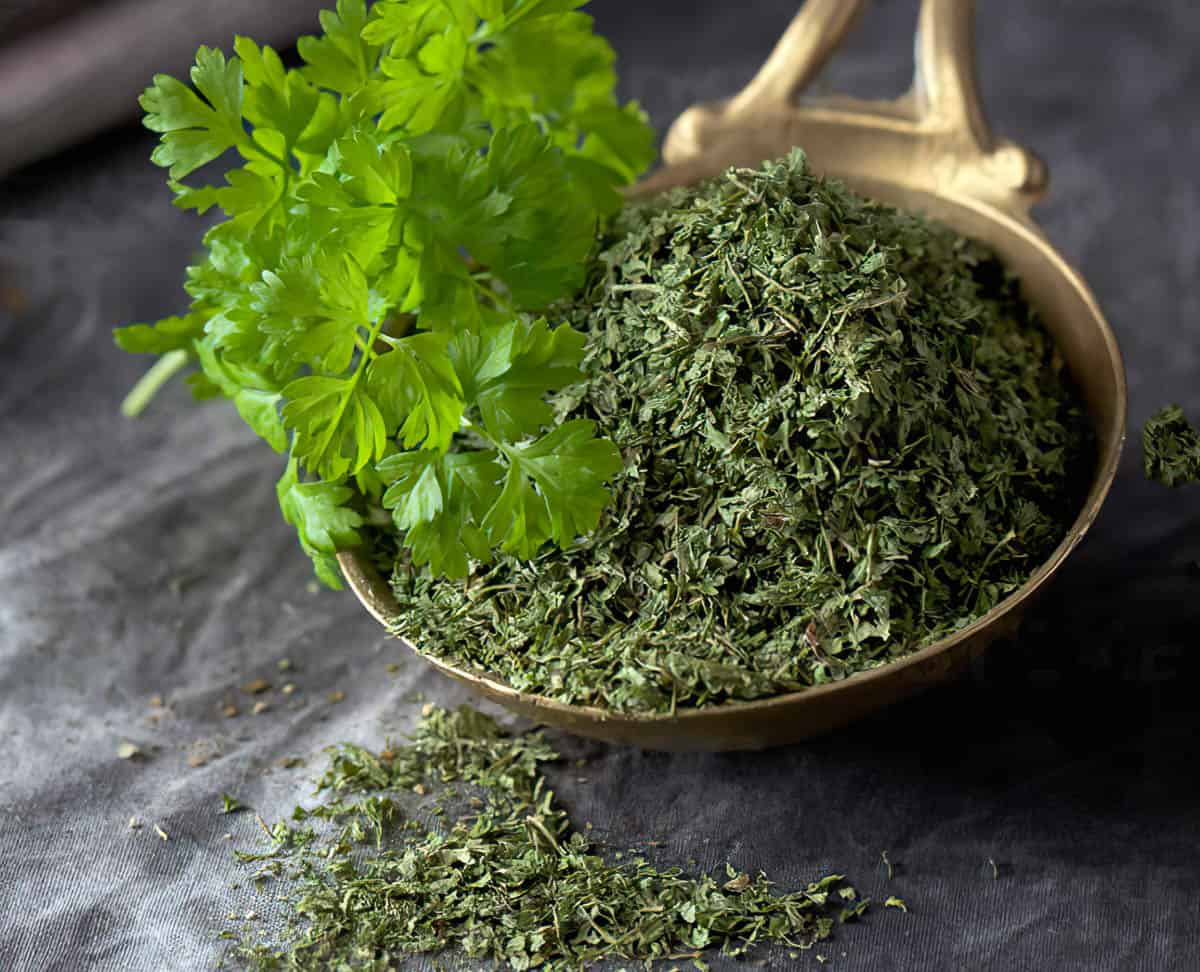
Dried Basil
While the flavor profile is quite different, parsley and basil are commonly used in Italian dishes. You can use dried basil as a substitute in most recipes.
- Tastes Like: Sweet, savory, minty, with hints of anise and pepper. As a dried herb, this will taste more intense than the fresh basil described above.
- Substitution: Use ⅓rd the amount. For example, if the recipe calls for 1 tablespoon fresh parsley, use 1 teaspoon dried basil.
- Special Notes: Start with the above ratio, then season to taste. Basil has a milder flavor than parsley, so you may want to add a little extra to achieve desired flavor. Best when used in sauces and stews.
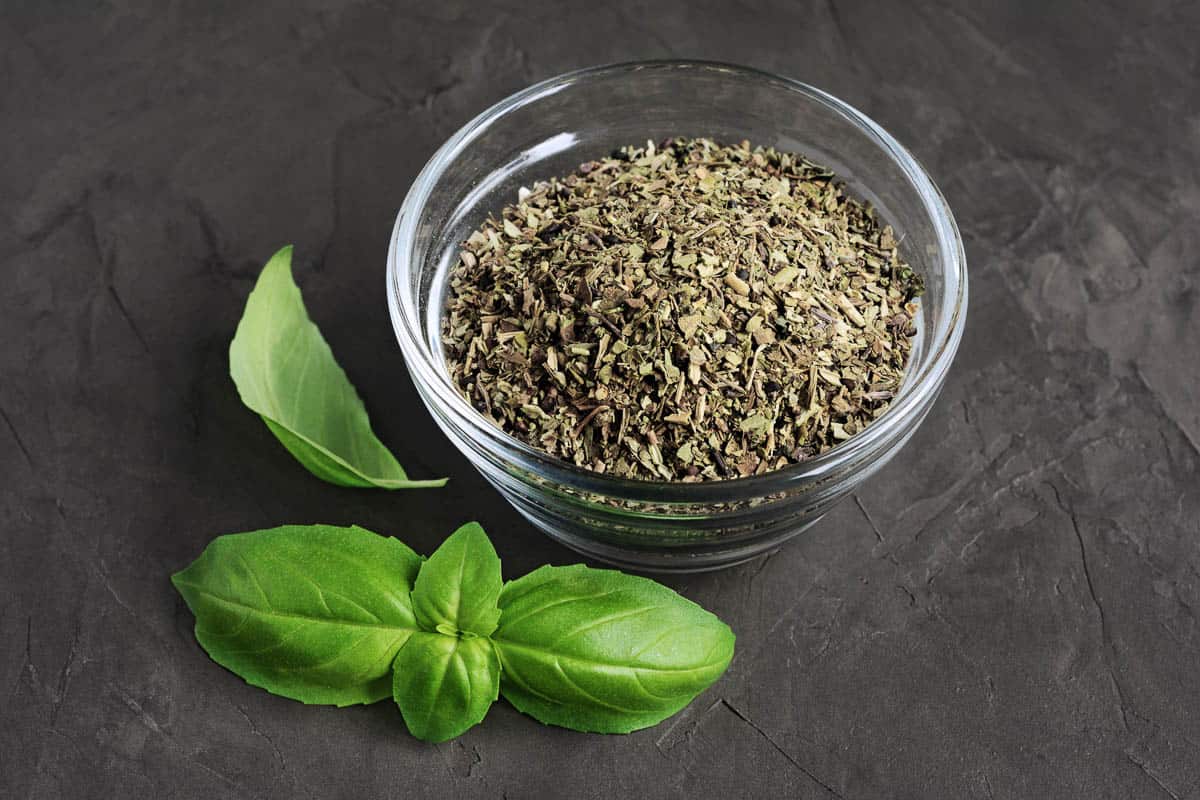
Dried Oregano
Oregano leaves that have been dried have a somewhat sweet taste, so the flavor is not quite the same as fresh parsley. However, this is an herb that is also commonly used in various dishes and acts as a good alternative.
Oregano is commonly used in sauces, stews, soups, on pizza, in meat marinades, salads, and stuffings to name a few.
- Tastes Like: Sweet, minty aroma with a subtle sweetness and peppery bite. Oregano is considered a strongly flavored herb, and the dried version is even more intense.
- Substitution: Use ⅓rd the amount. For example, if the recipe calls for 1 tablespoon fresh parsley, use 1 teaspoon dried basil.
- Special Notes: Oregano has a stronger flavor than parsley, and it is somewhat unique. If you have never cooked with oregano before, consider starting with just ⅙th the amount. Toward the end of the recipe, you may add additional oregano to taste.
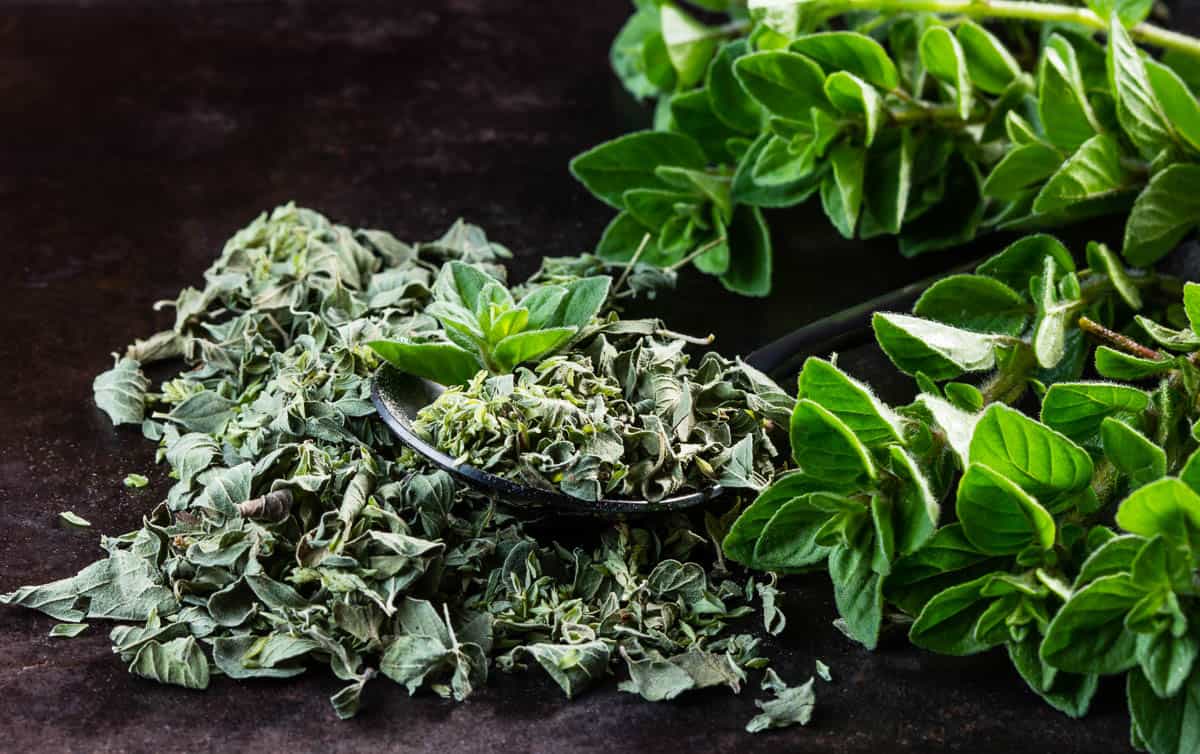
Dried Tarragon
Dried tarragon can also be used in place of fresh parsley. While dried tarragon has a weaker scent than fresh, the flavor is much stronger. So when using dried, use a smaller amount (see below).
It works best in dishes with a longer cooking time, which gives the flavor time to come out. As a dried herb this works well when substituting in egg, fish and chicken recipes.
- Tastes Like: Dried tarragon is a more intense flavor than its fresh counterpart– bittersweet, pungent, with a mild licorice aftertaste.
- Substitution: Use ⅓rd the amount. For example, if the recipe calls for 1 tablespoon fresh parsley, use 1 teaspoon dried tarragon.
- Special Notes: Best in dishes that have a long cook time, as it allows more flavor to come out.
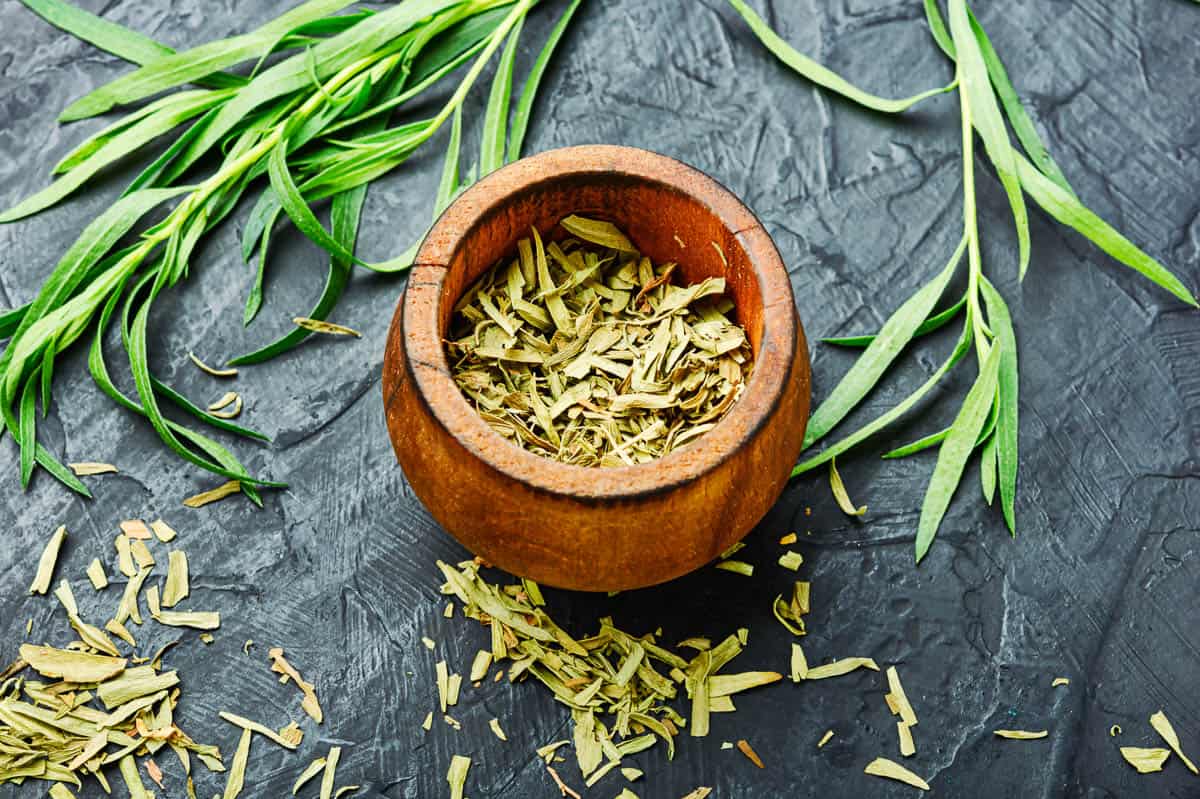
Dried Cilantro
Dried Cilantro is another good substitute for parsley, although it may taste “soapy” to some people (for more on this, see Cilantro Leaves in the Fresh Substitutes section above).
- Tastes Like: Because it is dried, this type of cilantro will have a more intense citrusy and (for some people) soapy taste.
- Substitution: Use ⅓rd the amount. For example, if the recipe calls for 1 tablespoon fresh parsley, use 1 teaspoon dried cilantro.
- Special Notes: Not a good alternative if you are cooking for a group of people (as some may think it tastes soapy).
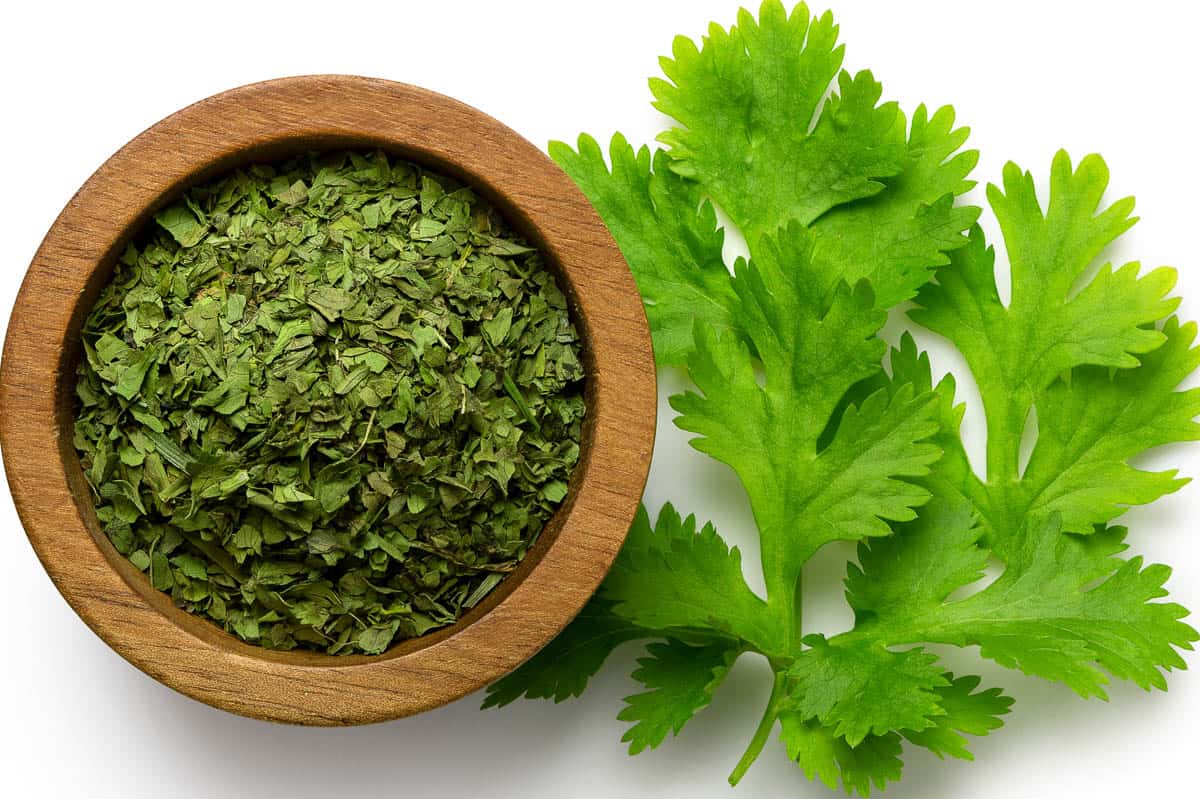
Dried Chives
Chives have a mild onion and garlic taste and are best added into dishes as you cook. Unlike fresh chives, dried chives do not work as well as a garnish.
- Tastes Like: Mild onion flavor with a hint of garlic. As a dried herb, this type of chives will be more intensely flavored than the fresh chives described above.
- Substitution: Use ½ teaspoon dried chives for 1 ½ teaspoon fresh parsley. For example, if the recipe calls for 1 tablespoon fresh parsley (which equals 3 tsp), use 1 teaspoon dried chives.
- Special Notes: Best in dishes with a longer cook time, especially recipes for eggs, potatoes, sauces, soups, salads, and dressings.
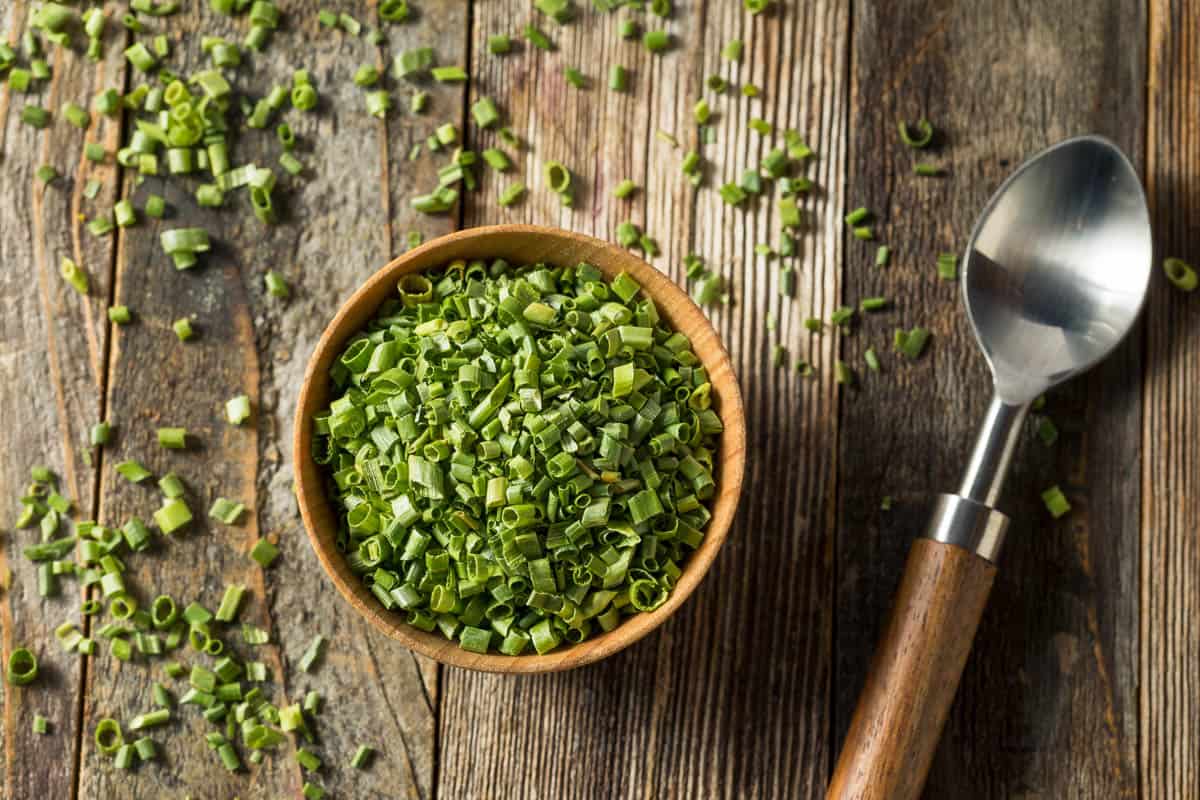
There are many things to love about parsley. A versatile herb rich in vitamins, minerals, and antioxidants, parsley brings both nutrition and crisp flavor to any dish.
However, parsley substitutes can bring their own health benefits and complex flavors to the mix. Best of all, they are fun to experiment with!
Using the guide above, first decide if your recipe requires a fresh or dried herb substitute. Then, refer to the appropriate section and choose a parsley replacement that matches best in terms of flavor, aroma, and texture. Enjoy!


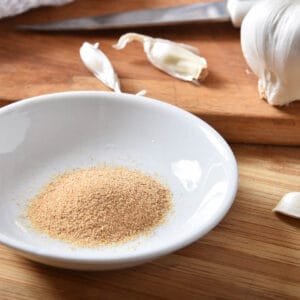
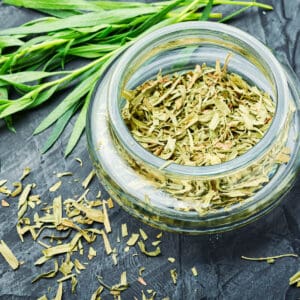
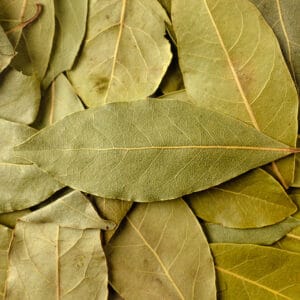
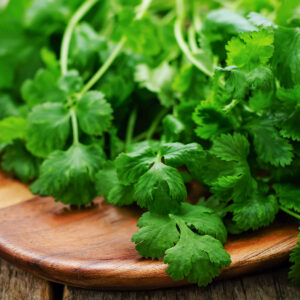
Leave a Reply